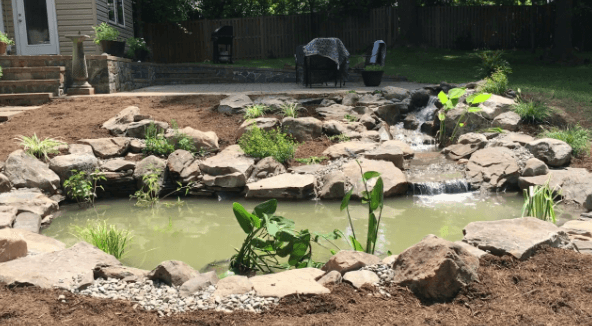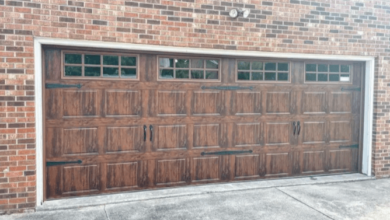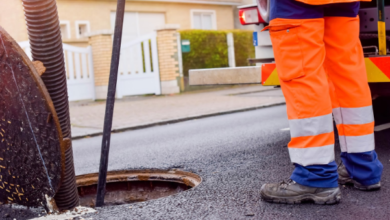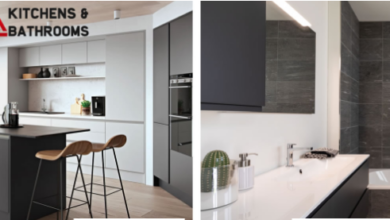What Koi Pond Building Materials Last Long and Stay Safe

Creating a koi pond is not just about digging a hole and filling it with water; it’s about building a sustainable aquatic ecosystem that will thrive for years. One of the most important decisions you’ll make is selecting the right koi pond building materials. The materials you choose will directly impact the pond’s durability, safety, appearance, and maintenance needs. Poor material choices can lead to leaks, structural failure, or even harm your fish due to toxic elements leaching into the water. By focusing on strong, weather-resistant, and fish-safe materials, you can enjoy a pond that’s both beautiful and functional for decades.
Why Selecting Proper Materials is Crucial for Koi Ponds
Koi ponds differ from simple garden water features because they house valuable fish and often require advanced filtration and water circulation. Materials used in construction must handle constant water exposure, changing weather, and sometimes heavy loads like rocks or waterfalls. Using low-grade or unsuitable products may cause cracks, leaks, or unsafe conditions for koi and plants. Choosing the right koi pond building materials means less long-term cost, less maintenance, and a healthier environment for your fish.
Longevity and Cost Efficiency
Good materials might cost more initially, but they save money over time. Cheap liners or untreated metals can corrode or tear, leading to repairs or complete rebuilds. Investing in long-lasting materials ensures fewer replacements and a better return on investment.
Fish and Plant Safety
Some materials can release toxins, like untreated concrete or metals. These can affect water quality and harm fish health. Safe materials keep your koi stress-free and healthy while supporting beneficial bacteria and aquatic plants.
Aesthetic Appeal and Versatility
The pond’s look matters too. Materials should not only be durable but also attractive. Stones, liners, and sealers must integrate well into landscaping while allowing design flexibility.
Essential Koi Pond Building Materials That Last and Stay Safe
When choosing koi pond building materials, focus on items that combine strength, flexibility, and safety. Below are the top choices that professional pond builders recommend.
1. Reinforced Concrete for Strength and Custom Design
Concrete is a popular choice for large and custom-shaped koi ponds. When reinforced with steel mesh or rebar, it forms a durable structure that can last decades. Concrete allows flexibility in depth, shape, and size, making it ideal for koi enthusiasts who want specific designs or deeper ponds to protect fish in colder climates.
Advantages:
- Extremely durable and stable.
- Customizable shapes and sizes.
- Supports heavy loads like rocks and waterfalls.
Key Tip:
Concrete must be sealed with a fish-safe pond sealer or coating. Raw concrete can release lime, raising pH levels and harming koi. Using sealers also prevents water leakage and improves longevity.
2. EPDM and PVC Liners for Flexibility
For many pond owners, liners are the easiest and most cost-effective way to create a pond. EPDM (Ethylene Propylene Diene Monomer) liners are the gold standard for pond liners. They are flexible, UV-resistant, and fish-safe. They can handle a variety of shapes and depths, which makes them ideal for homeowners who want a unique design. PVC liners are another option but tend to be thinner and less durable than EPDM.
Advantages:
- Easy to install.
- Flexible for different shapes and designs.
- Safe for fish when labeled fish-grade.
Key Tip:
Always use an underlayment beneath liners to prevent punctures from rocks or roots. Choose a thickness of at least 45 mil for long-term durability.
3. Fiberglass Ponds for Low Maintenance
Fiberglass is a strong, lightweight material that resists cracking and leaking. It’s often used in preformed pond shells, making installation quick and straightforward. Fiberglass surfaces are smooth, which prevents debris buildup and is gentle on fish.
Advantages:
- Extremely long-lasting.
- Low maintenance and easy cleaning.
- Safe and smooth for koi.
Key Tip:
Fiberglass ponds come in fixed shapes, so design flexibility is limited. They are best for medium to small ponds or formal settings.
4. Natural Stone for Beauty and Structure
Stone adds a natural and aesthetic element to any koi pond. Large rocks can form edges, waterfalls, or plant shelves. Granite, slate, river rock, and flagstone are popular options because they resist weathering and look great.
Advantages:
- Enhances natural beauty.
- Provides hiding places for koi.
- Very durable.
Key Tip:
Clean stones thoroughly before placing them in the pond to remove any residues or soil that could cloud water or introduce contaminants.
5. Pond-Safe Sealers and Coatings
Even durable materials like concrete or stone need protection. Non-toxic, fish-safe sealers prevent chemical leaching and seal tiny cracks. They also extend the life of pond surfaces by creating a waterproof barrier.
Advantages:
- Protects fish and water quality.
- Reduces algae growth in crevices.
- Extends lifespan of materials.
Key Tip:
Reapply sealers periodically according to manufacturer instructions to maintain integrity.
Additional Components for a Long-Lasting Koi Pond
Protective Underlayment
Underlayment is a cushioning layer placed beneath liners. It prevents punctures and provides stability, extending the liner’s life. Heavy-duty fabrics are best.
Safe Pump and Filtration Materials
The pump, filter, and plumbing parts should be made from high-quality, UV-resistant plastics or stainless steel. Low-grade plastics can crack over time, and some metals may corrode or release harmful elements.
Plant Baskets and Shelves
If you plan to include aquatic plants, use UV-stable and non-toxic baskets or shelves. Coated metals or high-quality plastics work well and won’t harm fish.
Best Practices to Maintain Material Integrity
Even the best materials need care to last long. Here’s how to keep your pond safe and durable:
- Inspect liners, sealers, and stones annually for wear.
- Clean filters and pumps regularly to avoid stress on components.
- Remove debris and fallen leaves to prevent decay and blockages.
- Avoid untreated woods or metals that may rot or rust.
- Provide shade or pond covers during extreme weather to reduce UV damage.
Frequently Asked Questions
Which liner material is best for a koi pond?
EPDM liners are considered the best due to their durability, flexibility, and fish safety. They can last 20–30 years if installed correctly.
Is concrete safe for koi?
Yes, but it must be sealed properly. Unsealed concrete can leach lime and alter water chemistry.
Can stones affect koi pond water?
Clean natural stones are safe. Always rinse them to remove dust, dirt, or chemicals before use.
How do I prevent liners from tearing?
Use a high-quality underlayment and avoid sharp rocks or roots in the pond bed.
How often should I reseal a concrete pond?
Typically every 5–10 years, depending on wear and exposure.
Final Thoughts
Choosing the right koi pond building materials can mean the difference between a pond that lasts a few years and one that becomes a lifelong feature in your garden. Reinforced concrete, EPDM liners, fiberglass shells, natural stone, and pond-safe sealers are top choices for strength and safety. Combine these materials with proper installation and maintenance, and you’ll have a pond that supports healthy koi, remains structurally sound, and enhances your landscape for decades.





